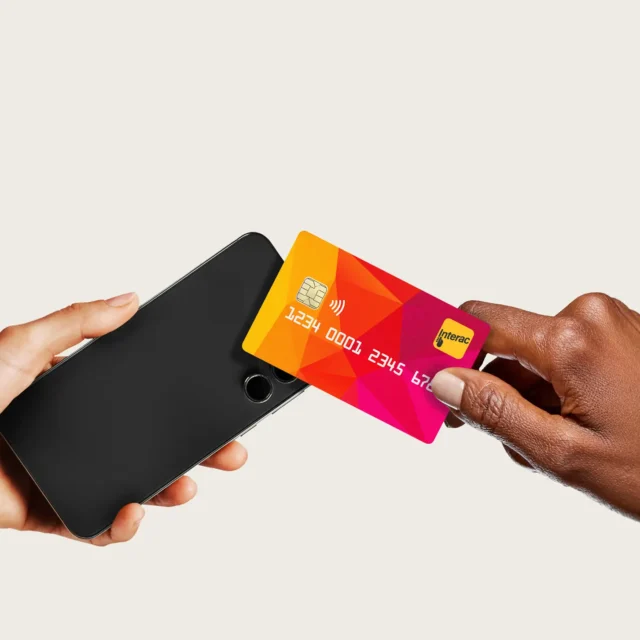Canadians weren’t as quick as consumers in some other countries to jump on the “buy now, pay later” bandwagon when shopping. But the pandemic nudged many of them into giving it a try — and now, adoption and interest are heating up.
Major foreign-based providers are entering the market, while established domestic financial entities are making plays of their own, leading the Financial Post to call BNPL (“buy now, pay later”) “the most lucrative four letters in fintech.”
At Interac, we keep a close eye on all payment trends. With BNPL, we’re hoping to see the trend develop in a way that offers consumers transparency and control. We know there is a foundational connection between control and financial optimism – it’s what we’ve built our brand on.
For now, here’s what you need to know about the trend:
Buy now, pay later in Canada: Off to a slow start …
Instalment payments have long been established for larger purchases like appliances and furniture. More recently, consumers are increasingly paying for smaller, routine purchases like clothing and cosmetics through BNPL arrangements. Typically, BNPL offers online shoppers the chance to divide the cost of a purchase over a number of equal payments — often one instalment up front and three to follow in monthly intervals (but arrangements may vary).
Although some providers do offer plans for brick-and-mortar retail, BNPL is primarily an e-commerce phenomenon.
And it’s one that Canadians are learning about, if not necessarily trying right away. According to a recent report from the Financial Consumer Agency of Canada, 34 per cent of Canadians are familiar with BNPL, while just 8 per cent made a BNPL transaction between September 2019 and March 2021.
Compare that with more mature BNPL markets: One-third of adults in the United Kingdom have used BNPL, and Reuters reported that 42 per cent of Americans have done so.
… but BNPL is heating up
Why is interest in BNPL keener now? For one thing, a number of BNPL lenders are now operating in Canada. Some are multinational and new to the market, others are long established in Canada, and homegrown financial entities are also launching their own BNPL offerings.
Second, merchants have responded. Hundreds are now partnering with BNPL providers in Canada, and instalment payments were reportedly growing at a year-over-year rate of 30 per cent as of July 2021. Another report forecasts growth of around 24 per cent in Canada in the years 2021 through 2028. One forecast predicted the BNPL market will reach $50-billion annually as it matures.
Why buy now, pay later appeals to consumers — especially younger ones
The allure of deferred payment without interest payments is self-evident: Consumers typically pay little or no interest. (Providers make the bulk of their revenue from retailers’ fees.)
There’s evidence that the call of BNPL is especially strong in younger consumers, who often choose online retailers based on how easy it is to check out. The Financial Consumer Agency of Canada, the country’s top consumer protection agency, reports the highest uptake for online BNPL in the 18-to-34 age group, echoing other surveys from Canada and abroad.
BNPL could also become more popular for consumers as a hedge against inflation: In the context of the highest consumer price inflation Canada has seen in decades, shoppers who might be worried about rising prices can use BNPL to lock in today’s dollar figure for their purchases.
What’s in it for retailers? BNPL could lead to larger shopping carts
For retailers, the upside of BNPL is simple: It could entice consumers to spend more. RBC Capital Markets estimates the offer of BNPL grows the shopping cart between 30 and 50 per cent on average.
Growing concern around risks
As more and more consumers opt to pay with “four interest-free payments” (or similar), there’s a potential downside: Many will use deferral as a substitute for sound budgeting —and get in over their heads.
The Chartered Professional Accountants of Canada has cautioned consumers about the risks of falling behind (including steep late fees for missing a payment), as with all transactions where the money is not yet in hand.
Many consumers are eyeing the trend with caution, too: Three-quarters (74 per cent) of survey respondents told the Financial Consumer Agency of Canada they wouldn’t consider using BNPL. The agency is also reportedly planning to study the risks to consumers.
In countries where BNPL is more established, regulators are already getting more involved. U.S. regulators have asked providers for more information, citing various concerns, while British BNPL lenders have agreed to amend their terms to make them “fairer and easier to understand.”
The CEO of one of the foreign-based providers entering the Canadian market told The Globe and Mail that it’s making more of an effort to encourage consumers to spend money they already have. “Preferably you should use money that’s on your account,” he said.
Encouraging financial responsibility would be one positive development as BNPL evolves. At Interac, our experience also tells us payment innovations work best when they’re convenient and straightforward to use, while also offering consumers control over their money and data.


